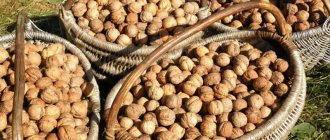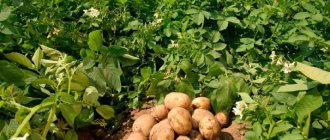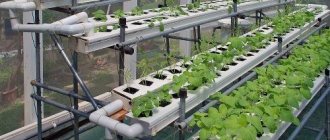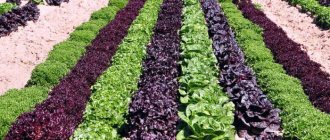With the development of technological processes, medicinal plants have become widespread in pharmacology.
Based on herbs, tablets, ointments, and powders are made that are used in the treatment process. Growing herbs has become one of the areas of activity for a number of foreign pharmaceutical companies. With enviable consistency, the demand for herbal treatment is increasing, and the old system of procuring medicinal herbs has been almost completely destroyed, and a new one has not yet been created. This, in turn, creates a shortage and increases the cost of medicinal herbs. In this article we will look at growing medicinal herbs as a business, which herbs are the most popular and the process of growing them.
So, you own a plot of land or you rented it and decided to grow and sell medicinal herbs.
Among the variety of medicinal plants, the most popular are the raw materials of St. John's wort and string, plantain and oregano, birch buds and linden blossom, tansy and eleutherococcus, elecampane and rhodiola, rose hips and coltsfoot, hawthorn and valerian, belladonna and rowan leaves, datura and foxgloves, hop and henbane inflorescences, aconite tubers and fern rhizomes, hemlock and flax seeds.
The requirements that must be met for growing medicinal plants are identical to those for all agricultural crops. For each type of plant, it is necessary to take into account weather and climatic conditions, humidity and temperature changes, etc. All this must be especially taken into account when growing medicinal plants brought from other regions or states. Despite this, there are plants that do not require special knowledge and the use of certain agricultural techniques, as well as special care.
If you decide to create a small farm for growing medicinal plants, then it is best to choose those crops that have the same method of cultivation, collection and processing. In this case, you can avoid unnecessary financial costs for the purchase of various equipment. Speaking of a mini-farm, it will not require any special financial expenses. At the same time, as practice shows, the profitability of the business of growing medicinal herbs reaches 150 percent.
To begin with, it is enough to have at your disposal a small plot of land and a well-ventilated room where the seeds and harvested crops will be stored. Equipment must be purchased based on the direction of the farm’s activities. For example, if you decide to grow and sell essential oil medicinal plants, such as sage or mint, lavender, then you will need to purchase special equipment for oil extraction. If you plan to grow plants such as licorice or valerian, chicory or echinacea, which use the root as a medicinal raw material, then you will need a washing machine. If in the future you plan to expand your business and increase production volumes, then you need to pay special attention to the premises where you will store raw materials in the future, because state and international standards apply to the quality of medicinal plants.
The state fully controls any company whose activities include the cultivation of raw materials and the production of medicines. Such companies are subject to mandatory certification. The certificate is issued in Russia by the Ministry of Health. During the certification procedure, specialists check the conditions for growing medicinal plants and their storage. The main criteria here are efficiency and safety. You can find out about all the requirements for such farms from the health department. Below, as an example, we give the technology for growing two popular types of medicinal plants that do not require special care.
Economic feasibility of a business plan
The production and sale of rare and exclusive products is highly profitable. The cultivation of medicinal herbs is no exception. The desire of man to get as close to nature as possible encourages natural cosmetics, eating organic foods and using medicinal herbs in treatment.
This is one of the types of business where profits can be obtained completely without investment. If you master the agrotechnical principles of growing herbs, you can obtain a stable amount of valuable medicinal raw materials from a small plot for several years, without using additional tillage. In addition, there is another pleasant advantage - the herbs are collected mainly during the two summer months, but they can be sold or processed throughout the year.
Medicinal herbs, as a product, have attractive qualities:
- exclusivity;
- are in great demand;
- For storage, just dry;
- the raw materials may not have a presentable presentation, and this will not decrease in price;
- suitable for processing and associated production of natural medicinal preparations, ointments, oils, etc.
The business of growing medicinal herbs is attractive because you only need to invest in it once when sowing. The rest of the time it will generate net income. Free access to the necessary natural raw materials expands the enterprise’s capabilities in the production and packaging of unique herbal infusions; when growing oil crops, it becomes possible to produce essential oils. The popularity of medicinal herbs is explained by the relatively low price on the pharmaceutical market, accessibility and universal applicability.
How to start a business growing medicinal herbs
In order to start growing medicinal herbs, you will first need to study not only the local pharmaceutical market and production. It will be necessary to study the types of medicinal herbs growing, at least in the region where the future enterprise is located. In addition, it is necessary to obtain a basic understanding of the applicability of medicinal plants, the optimal timing of their collection and the conditions of storage and processing. All information and knowledge can be obtained at special courses and seminars for herbalists.
Even at the beginning of his activity, an entrepreneur must imagine how he plans to further develop the business. There are three most popular options for developing a business growing medicinal plants:
- growing and collecting finished products for sale at collection points;
- sale of grown medicinal herbs for the production of natural cosmetics, local pharmaceutical enterprises or other production;
- organizing our own production of tinctures, infusions, oils, cosmetics, etc.
The simplest form of organizing a business for growing medicinal plants can be considered as a business that does not require start-up capital. And, on the contrary, if it is planned to introduce such an additional niche as processing, it will require at least minimal investments.
Market analysis and the availability of cosmetic, perfumery and pharmaceutical enterprises or herbal collection points in the immediate vicinity will help you figure out what form of doing business is relevant in a particular region. Don't forget about the food industry. Some herbs are used not only as raw materials for medicine, but also as spices. Also, organizing a point for receiving medicinal herbs can also be considered as ancillary income that helps expand the business.
Main stages of business organization
Regardless of the form of business that the entrepreneur will adhere to, the basis is the production itself, namely the cultivation of medicinal herbs. For this you will need:
- land plot;
- medicinal herb seeds;
- selection and purchase of equipment;
- room for drying and processing of raw materials.
Choosing a plot of land for growing medicinal plants is not difficult. It does not have to be a huge area, so even a summer cottage plot of several hundred square meters is suitable for these purposes. If the ultimate goal is not only the collection of grown herbs and their sale, then it is best that the site is located in an environmentally friendly place, away from industrial enterprises and major highways. For marketing purposes, identifying the area where the weed was grown will be a plus for business. Renting a plot for growing medicinal herbs is advisable if you plan to grow a large volume of raw materials.
seeds from those plants that are often found in this area. This will make it easier to care for; the plant will have enough moisture and nutrition, due to the fact that this is its natural habitat. It is a good idea to monitor local markets and pharmaceutical companies to find out which herbs are in high demand and command a higher price. Some herbs are grown only using special technologies, and some grow without intervention for several years in one place. First, you need to choose the most unpretentious ones in order to reduce your labor costs. Having gained experience, you can set your sights on serious, more profitable crops.
The most unpretentious medicinal herbs that are always in demand are:
- pharmaceutical camomile
- calendula
- burdock
- sage
- licorice
- rosemary
- St. John's wort
- hop
- linen.
By specializing in the cultivation of one species, you can focus on volume and organize sales for processing. Growing several types of plants at the same time opens up more opportunities for the business owner. For example, you can grow herbs for specific formulations of medicinal mixtures, teas or ointments.
The equipment needed for a herbal growing business may not be needed. Its presence provides additional opportunities for business development. Depending on the chosen direction, the following equipment is used in the herbal business:
- drying chambers;
- mixer for mixing;
- vibrating sieve;
- washing;
- chopper;
- packaging technology;
- apparatus for the production of oils.
Equipment, except for packaging and drying, will be needed only for further processing of plants. This could be soap making, or the production of essential oils, cosmetics or medicinal ointments. Such equipment costs a lot, so it is usually considered in perspective.
The room in which storage, drying and packaging of raw materials will be carried out must be dry, well ventilated and bright. It is advisable that the collected plants are not exposed to direct sunlight. The area should be selected taking into account the fact that medicinal herbs are usually collected at approximately the same period, so you will need enough space for storage and drying.
Where to collect medicinal plants
It is advisable to collect medicinal plants in natural places far from industrial centers. Wooded, mountainous or steppe areas are suitable for this. To effectively organize a business in medicinal herbs, it is advisable to have a base - a house in a village or settlement near a forest or unplowed, abandoned agricultural land.
If you can’t afford to buy a house in the village, you can find villagers from whom you can rent a room. You will also need a place where the medicinal collection will be stored - for example, a barn or part of the veranda.
If you don’t have your own house or cottage, the best option for a business would be to rent an abandoned house and equip it as a storage place. There are plenty of similar houses in remote villages and villages. You can organize a kind of medicinal mini-factory in it.
Technological nuances of growing and collecting medicinal herbs
Basically, growing medicinal plants does not involve the use of any special agricultural techniques. It will be enough to have basic knowledge about the plant’s growing environment and the timing of its collection. If you plan to grow a plant that is atypical for the area, then consulting a phytospecialist will not be superfluous, because Some herbs in a foreign environment lose their properties or individual active components.
Harvesting plants requires more attention. The grass to be harvested must be fresh, undamaged, without obvious signs of disease or pest activity. Collecting medicinal plants means that it should grow in the same place for several more years. Therefore, not all plants are collected. It is necessary to leave at least one plant per 1 sq.m. for further reproduction.
How it all began
Hello. My name is Rudakov Yuri Sergeevich, I am 35 years old, I live in Belgorod.
My wife and I have always loved going out of town on weekends. Beautiful nature, clean air, the opportunity to be away from the bustle of the city - this is not all that attracted us. On one of our regular trips to nature, we collected a whole armful of St. John's wort for further drying. We all loved to drink St. John's wort tea, because it is known that it cures 99 diseases, moreover, it has a pleasant taste and aroma.
In general, we very often collected medicinal herbs. We adopted this tradition from my wife’s parents - they never drank store-bought teas, preferring exclusively natural medicinal herbs. When we had children, during the cold season, we also very often used grandmother’s recipes, which helped a lot. But we never thought about the fact that you can also make good money from collecting herbs.
Earning money idea
One evening, over a cup of tea, we somehow smoothly started talking about how it would be nice to also earn extra money by selling medicinal herbs. Finances were somehow not very good at that time, so any part-time job would not have been superfluous for us.
We all loved drinking St. John's wort tea.
The topic was suggested by my wife, but I was a little skeptical about this idea:
- The business outlook did not look very rosy.
- It was necessary to figure out how to sell such a product and to whom.
It was clear that the wife was really excited about this idea and really asked for support in this. She didn’t want to contradict her, because she, too, could be understood - sitting at home without work is boring, she wants to earn money, but there’s nowhere. Here, a seemingly illusory idea of covens turned up that could bring at least some penny for small expenses.
The wife decided to consult with her parents about the feasibility of such income. They supported her, in addition, they suggested places with an abundance of vegetation to collect the necessary herbs. I, in turn, also did not act as an outside observer and began to provide all possible assistance in this matter.
Where to sell harvested herbs
The question of where we will sell our preparations was resolved by itself. There was nowhere else to trade such goods except in the market: that’s where you could meet the most potential buyers, that’s where you could trade on any day of the week and for as long as you wanted.
To be on the safe side, we also decided to place several advertisements for sale on Avito, but we didn’t particularly count on selling medicinal herbs via the Internet - well, this is not the product that a potential buyer will be looking for there. In any case, it was stupid to just talk about trading; it was necessary to move from empty talk to direct action, which is what we began to do, making our dreams come true.
Sales organization and marketing techniques
You can start organizing the sale of medicinal herbs at a time when the plants are still growing. To do this, a search for distribution channels is carried out. The sale of medicinal raw materials occurs in pure, unprocessed or fresh form, to pharmaceutical enterprises or other production. Already dried and purified raw materials will be accepted at points for receiving medicinal herbs. If an entrepreneur has a large volume of one type of grass at his disposal, then it is most advisable to organize its wholesale sale. It will cost a little less, but there will be no risk of loss of raw materials in case of improper storage or loss of presentation.
Medicinal herbs do not need advertising; it is easiest to sell them in their natural form. It’s another matter if production is organized on the basis of grown herbs. Then this will require additional promotion of the final product. There are many ways to promote alternative medicine products, but the most effective remain:
- creating your own website;
- promotion in social networks;
- the old way of “word of mouth”;
- direct communication with potential buyers.
The more an entrepreneur knows about the medicinal plant that he grows, or about the product made from it, the greater the chances of not only successful and regular sales, but also of business stability.
Business nuances
There are no significant problems or difficulties in such schemes; there are only certain nuances that must be taken into account, namely:
- Collect medicinal herbs in a timely manner, namely during the flowering period.
- It is impossible to collect during the rainy season - such goods cannot be stored and it will be almost impossible to dry them.
- Even if the product was not sold out in a timely manner, this is not a reason to despair, because it can always be sold in dried form.
Herbs are not perishable goods.
Payback and profitability calculations
The business of growing medicinal herbs in its pure form reaches from 150 to 300% profitability, depending on the period. Already in the second season of growing plants, profitability increases due to the fact that there is no investment in cultivating the land or seed material. All that remains is care, observation of plants and their collection.
It is generally accepted that on an area of 1 hectare of cultivated plants, on average one can obtain 1 ton of finished raw materials. The sowing rate of medicinal plant seeds ranges from 0.5-5 g of seeds per 1 sq.m. For example, for 1 hectare of land you will need 3 kg of chamomile seeds. In addition, it must be sown together with winter cereals. Those. Cereal seeds, their sowing and harvesting, are considered expenses. 1 hectare requires 200 kg of wheat for sowing. So,
- 3 kg of chamomile seeds – 1,500 rubles.
- 200 kg of winter wheat – 1500 rubles.
- Tillage and sowing per 1 hectare – 12,000 rubles.
In total, we get the starting costs for growing 1 hectare of chamomile - 15,000 rubles. From 1 hectare you can collect 1 ton of chamomile flowers. The average cost of this type of plant on the market is 150 rubles per kg. In total, you can get about 150,000 rubles for 1 ton of chamomile. Let’s take away the costs of starting a business, workers’ salaries, drying and packaging costs and get at least 120,000 net profit from 1 hectare of land.
For example, growing rarer medicinal herbs can bring greater profits. For example, the cost of 1 kg of blue cornflower starts from 300 rubles/kg, white cinquefoil root – 1500 rubles/kg, and spotted orchis at the reception is accepted at 3000 rubles/kg.
The success of a business for growing medicinal herbs depends not so much on maintaining the “cost-receipt” balance, but on how much internal energy the entrepreneur puts into this business. Today this type of business is becoming not only highly profitable, but also to some extent exclusive.











